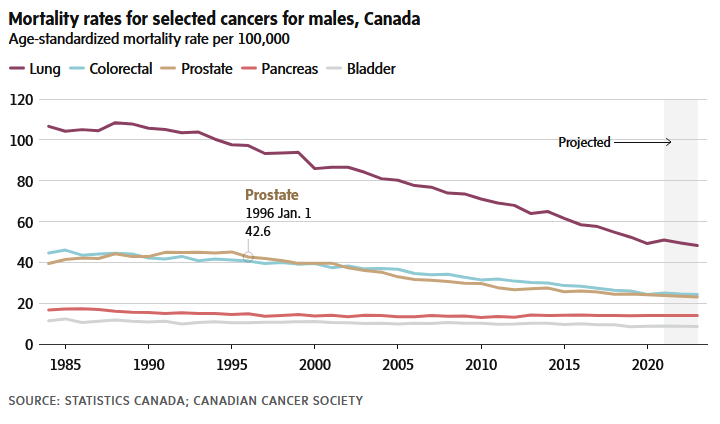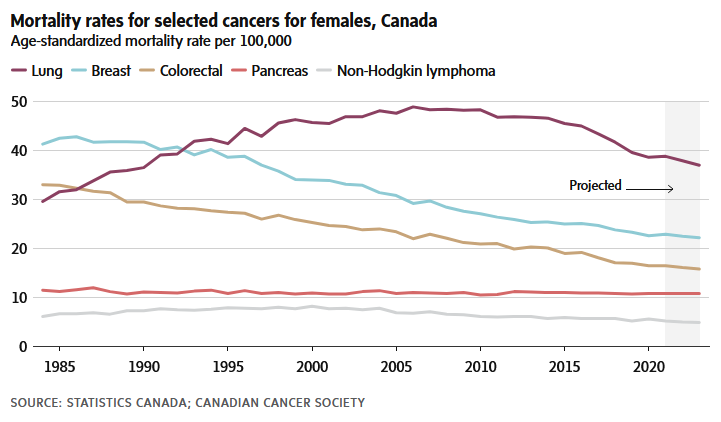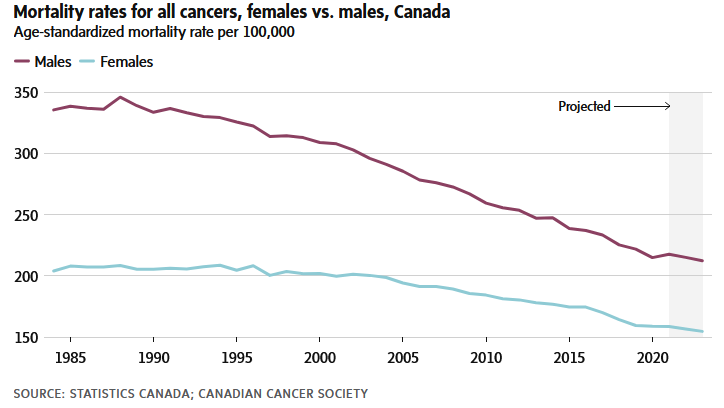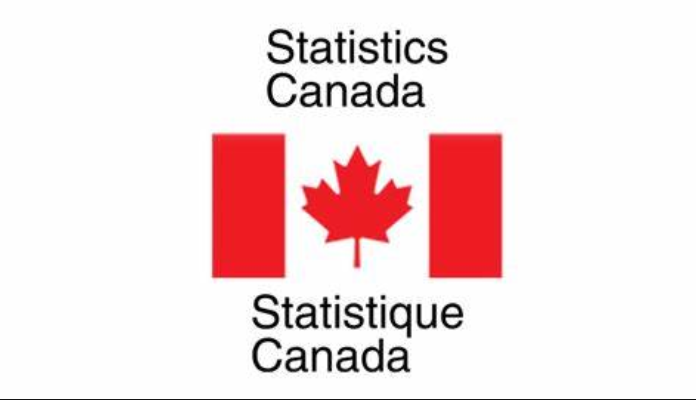Annual health reports finds lung-cancer mortality rates drop while cervical cancer diagnoses increase
Lung-cancer mortality rates in Canada are falling faster than ever before, according to a new report that shows how tobacco-control efforts initiated decades ago and improvements in treatment are paying off today.
The Canadian Cancer Society, Statistics Canada and the Public Health Agency of Canada highlighted the drop in lung-cancer mortality rates – which have fallen by 3.8 per cent a year since 2015 – in their annual statistical snapshot on the state of cancer, released Wednesday.
The rate of new lung cancer diagnoses fell by 2.1 per cent a year in the same period.
“I think this speaks to a huge success from all levels,” said Christian Finley, a McMaster University thoracic surgeon. “From health care practitioners to public health to municipalities who banned smoking in restaurants … this is a huge win coming to fruition.”
At the same time, lung cancer still kills more Canadians than prostate, colorectal and breast cancer combined. The new report found that although five-year survival rates for lung cancer have risen in recent years to 22 per cent – thanks to improvements in detection and treatment – they are far lower than the five-year survival rates for other common cancers such as breast (89 per cent), colorectal (67 per cent) and prostate (91 per cent.)

That’s in part because lung cancer remains a stigmatized disease, Dr. Finley said, with a limited number of organized, low-dose CT screening programs across the country to detect lung tumours early, when they’re easiest to treat. Cigarettes are the chief cause of lung cancer, although air pollution, radon exposure, a family history of lung cancer and plain bad luck also cause the disease in people who’ve never smoked.
“My everyday is seeing people who have this stigmatized disease who, when I tell them they have lung cancer, the first statement out of their mouth is, ‘I brought this on myself,’” Dr. Finley said. “There’s a lot of self-blame and stigma from society on these people.”
Despite the overall cancer death rate falling by a third since its peak in 1988, the actual number of new cancer cases and deaths has risen and will keep rising as the Canadian population grows and ages, adding pressure to the medical system, which remains overburdened since the height of the COVID-19 pandemic. Older age is a major risk factor for cancer.
The new report demonstrates how patients at risk of developing another common type of cancer, colorectal cancer, have benefited from widely available and well-organized screening with stool tests and colonoscopies, said Darren Brenner, a cancer epidemiologist at the University of Calgary.
The rate of new colorectal cancer diagnoses fell by 3.5 per cent a year between 2014 and 2019, a faster decline than in the past. Stool tests, followed by colonoscopies, are succeeding at finding precancerous polyps early, said Dr. Brenner, also the co-chair of the Canadian Cancer Statistics Advisory Committee.
On the opposite site of the ledger, cervical cancer is now increasing faster than any other cancer among women, with the new diagnosis rate having risen 3.7 per cent a year since 2015, the first significant increase since the mid-1980s.

Jennifer Gillis, senior manager of surveillance with the Canadian Cancer Society, said that finding is particularly concerning because cervical cancer, which is almost always caused by the human papillomavirus, can be prevented with a vaccine or caught early with a Pap smear.
“This reminds us that we really need to work together to ensure that people have access to the HPV vaccine,” Dr. Gillis said, “and to make sure that people have access to the cervix screening as well as follow-up of any sort of lesions or precancerous cells so they can be treated in a timely manner.”
An estimated 239,100 Canadians are expected to be diagnosed with cancer this year, up from 187,600 in 2013. This year, an estimated 86,700 people will die of cancer, making it the leading cause of death in this country.
MaryAnn Bradley, a 68-year-old lung-cancer survivor from St. Catharines, Ont., is glad to know she won’t be one of those grim statistics. She was fortunate to have her lung cancer discovered at Stage 1, when it could be removed with surgery. She’s been free of cancer for a decade.
Ms. Bradley is heartened by the progress on lung cancer identified in the new report, but she thinks more can be done, particularly when it comes to early detection and raising money for research.
“At first, I had survivor’s guilt,” Ms. Bradley said, “because I thought, ‘How come I get to live and these people at Stage 4 are going through so much, just trying to live with their diagnosis?’ So that’s when I decided that I would become an advocate for lung cancer.”

This article was reported by The Globe and Mail














